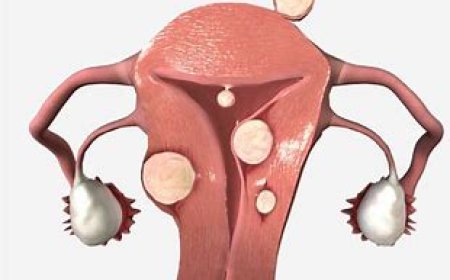Moles,Skin Tags,Freckles,lentigo,Seborrhic keratosis

Introduction:
In India, just like in other parts of the world, our skin can sometimes develop small bumps or spots that may look different from the rest of our skin. These are called skin growths, and they can be harmless or need some attention. Let's learn more about them and how we can take care of our skin.
Sign and Symptoms:
Skin growths may have different appearances, but some common signs include:
-
Moles: Moles are small dark spots on the skin that can be flat or raised.
-
Skin Tags: Skin tags are tiny, soft, and hang from the skin on a stalk.
-
Freckles: Freckles are small, light brown spots that appear after being in the sun.
-
Lentigo: Lentigo are dark spots that look like bigger freckles and mostly occur on sun-exposed areas.
-
Seborrheic Keratosis: Seborrheic Keratosis are raised, waxy, and usually brown or black.
What Are "Moles, Skin Tags, Freckles, Lentigo, and Seborrheic Keratosis"?
These are all types of skin growths that can appear on our skin. While some are completely normal and harmless, others may need to be checked by a doctor.
How Are "Moles, Skin Tags, Freckles, Lentigo, and Seborrheic Keratosis" Classified?
These skin growths can be classified based on their appearance and characteristics:
-
Moles: Moles can be classified into different types, like congenital moles (present at birth) and acquired moles (develop during childhood and adulthood).
-
Skin Tags: Skin tags are soft growths that can be classified based on their size and location on the body.
-
Freckles and Lentigo: Freckles and lentigo are both types of dark spots on the skin, but freckles are usually smaller and more numerous.
-
Seborrheic Keratosis: Seborrheic Keratosis can vary in appearance and may have different shapes and colors.
Causes and Triggers:
The exact causes of these skin growths can vary, but some common triggers include:
-
Sun Exposure: Spending too much time in the sun without protection can lead to freckles and lentigo.
-
Age: Some skin growths, like seborrheic keratosis, are more common as people get older.
Risk Factors with Examples:
Some factors may increase the risk of certain skin growths:
-
Family History: If someone's parents or close family members have many moles, they might have a higher risk of developing them too.
-
Sun Exposure: Spending a lot of time in the sun without sunscreen can increase the risk of freckles and lentigo.
Types of "Moles, Skin Tags, Freckles, Lentigo, and Seborrheic Keratosis" with Detailing:
Each type of skin growth has unique characteristics:
-
Moles: Moles can be small or large, flat or raised, and they can be various shades of brown, black, or even pink.
-
Skin Tags: Skin tags are soft and can appear on the neck, armpits, or other areas where skin rubs against skin.
-
Freckles: Freckles are small and usually appear on the face, arms, and shoulders.
-
Lentigo: Lentigo are bigger than freckles and can be oval or irregular in shape.
-
Seborrheic Keratosis: Seborrheic Keratosis can be rough or smooth and may vary in color from brown to black.
Diagnostic Tests and Treatments:
To diagnose these skin growths, a doctor usually examines them closely. In some cases, a biopsy (small skin sample) may be taken to check for any concerns.
Treatment for these skin growths depends on the type and any associated concerns:
-
Moles: Most moles are harmless and do not need treatment, but if a mole changes in shape, size, or color, a doctor may remove it.
-
Skin Tags: Skin tags can be removed by a doctor if they cause discomfort or affect appearance.
-
Freckles and Lentigo: Freckles and lentigo usually don't need treatment, but sunscreen can help prevent them.
-
Seborrheic Keratosis: If seborrheic keratosis causes irritation or concern, a doctor may remove it.
Complications of "Moles, Skin Tags, Freckles, Lentigo, and Seborrheic Keratosis" and Prevention Techniques:
Most of these skin growths are harmless, but it's essential to protect our skin from the sun and avoid unnecessary trauma to the skin to prevent complications.
-
Sunscreen: Wearing sunscreen with high SPF can protect the skin from the harmful effects of the sun.
-
Skin Check-ups: Regular skin check-ups with a doctor can help monitor any changes in the skin growths.
Understanding and taking care of our skin is vital for a healthy and happy life. While most skin growths are normal and harmless, it's essential to protect our skin from the sun and seek help from a doctor if we notice any changes or concerns. Remember, our skin is like a special protective blanket, and we should take good care of it!
What's Your Reaction?


























































